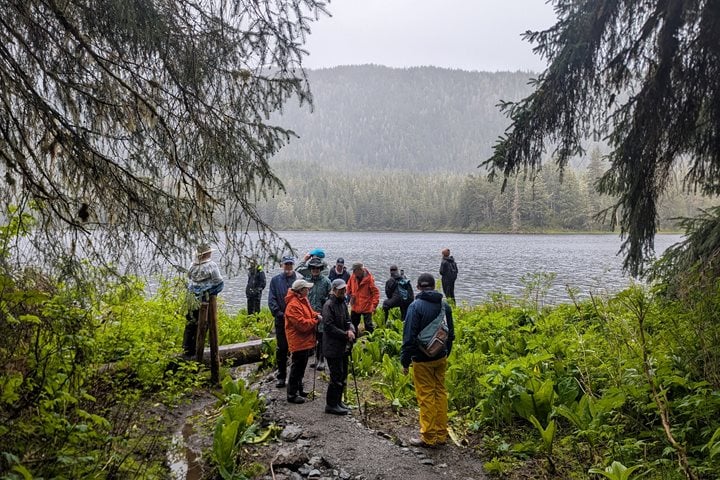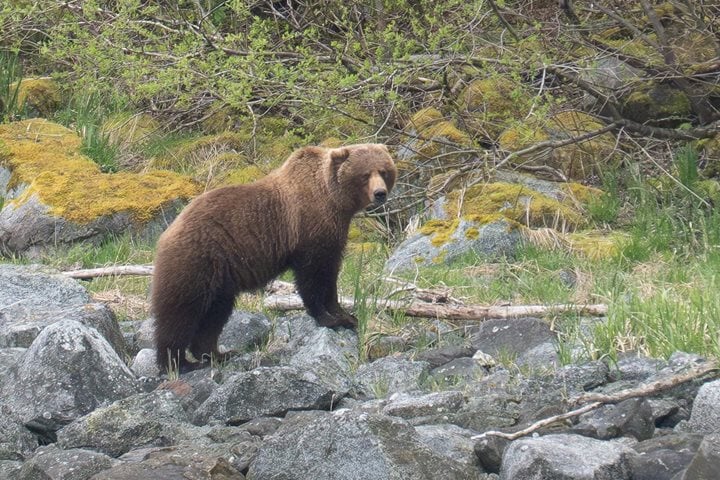Having pulled away from the dock outside of Sitka, National Geographic Quest anchored for the night in a small protected location not far away. Earlier risers were greeted with almost clear skies and cool temperatures. Bald eagles hopped on the edge of the shoreline searching for any scraps of spawned out salmon. Our destination for the morning was a bay named after a prominent Sitka resident during the late 1800s - DeGroff Bay on the west side of Krestof Island across the channel from the larger Kruzof Island which protects the eastern islands from the open North Pacific.
After some introductions and briefings, everyone was anxiously pulling on rubber boots and protective warm clothes to venture ashore and on a Zodiac cruise. A Zodiac ride of about 10 minutes brought us to the edge of an extensive mudflat exposed by the morning’s low tide. Although a bit bulky, the rubber boots were put to use getting out of the Zodiacs and walking across some thin mud. Naturalist-organized walks ashore along the forest edge and into the fringe of tall Sitka Spruce and Western Hemlock. This was our first opportunity to experience the beauty and environment of the temperate rainforest of the Pacific Northwest. A small stream trickled into the end of the bay and a number of bald eagles perched in the tops of some of the larger trees are flew over the meadow. Naturalists talked about the ecology of the forest edge and staff photographers gave pointers on how to capture the lovely shafts of sunlight highlighting the forest floor and tree canopy. After spending time onshore while the other half of the group had been Zodiac cruising along the rugged coast, the grouped switched for the remaining part of the morning.
Ahead of the ship for the afternoon there was a passage that is best transmitted during a tidal stage when the current is near slack. Many people were on deck to watch the passage and were treated to a rather calm bald eagle perched above the shoreline in the narrowest part of the channel. A number of fishing boats were coming or going through the same channel. The afternoon’s highlight though was a group of humpback whales feeding around one of the small islands along the side Peril Strait.
As a finale to the day, the six or so humpback whales provided us with thrill of seeing them cooperatively feeding and exhibiting a behavior called “bubblenet feeding.” The Bridge officers kept the ship in perfect position so everyone gathered toward the bow and everyone got fantastic views of how the whales coordinate their feeding. Also the undersea naturalists, Alyssa and Amy, lowered a hydrophone so we could hear live what was going on underwater. Researchers have discovered that one whale serves as a “singer” making tones which seem to act as coordinating sounds and at some particular point the whales all come up at one time with their mouths wide open engulfing gallons of water and food which is probably small schooling fish.
As we watched a number of small fishing passed and continued on their route. But we were in no hurry, and watching humpback whales behaving was one of the reasons we were on National Geographic Quest. Nature and wildlife are very often unpredictable and when the opportunity to see a breaching humpback whale juvenile with a feeding group happens then watch it, enjoy it, and marvel in the experience.









